A complete guide to Prawning
Choosing the best prawning gear can be a time consuming and confusing task. We have taken the pain out of choosing prawning equipment that is right for your prawning situation putting together a comprehensive list of the most popular prawning net, prawning lights and accessories that will suit all budgets and experience. Please note not all states allow the use of cast nets please check your states fisheries website.
Prawning Nets – Prawning Lights and Waders
Yaekoo
Maxer
Wilson
Cree
Eagle Claw
With the price of prawns spiralling in most local fish shops, both seafood connoisseurs and smart anglers welcome the opportunity to capture their own supply of really fresh prawns. In fact, so popular is this activity that during the summer months when a prawning ‘run’ is on, it’s not unusual to see estuary flats crowded at night with eager prawn hunters, out to trap a good haul of these crustaceans with a strong light and a net. Prawns are without a doubt the most popular and widely used bait and as a table delicacy, their sweet, tangy flesh makes a delicious meal for all the family.
Prawn or Shrimp?
The commercial prawns of Australian waters correspond to the shrimp of the United States while in Britain they have both prawns and shrimps in their waters. There is no zoological definition which differentiates between a prawn or a shrimp, consequently both names are commonly interchanged and equally valid. Structurally the distinction between the two is insignificant; prawns have two long pairs of branched antennae, shrimps have one long pair and one short pair. Also, shrimp do not have the pointed beak protruding from their shell which is typical of prawns.
The dictionary suggests that the word shrimp was derived from the old English ‘scrimman’ which meant to shrink, with the implication that a shrimp is a small crustacean. but this is dubious since some shrimps of the genus Macrobrachium are very large.
Able to Swim, Walk, Burrow
The body of a prawn is rather cylindrical. The limbs which extend from a seven-segmented abdomen are adapted for swimming, walking and burrowing. Unlike crabs and lobsters which crawl, prawns can swim as well as walk. its first five pairs of legs are walking legs or pereopods. Claws or chelae on the first three pairs allow the prawn to swim above the bottom it can also burrow, using its limbs to clear away the material on the ocean bottom. Burrowing prawns can breathe by means of oxygenated water which passes over the gills from a funnel formed by some of its head appendages.
The last segment of the prawn’s abdomen is the telson which. with the hind pair of appendages. forms a tail fan. The prawn has stalked eyes, a sharp beak and two pairs of branched antennae with at least one branch reaching back towards the tail fan.
If approached by a predator. the prawn is alerted by the antennae and is able to retreat with a backward flick of its tail. The front of the body, including the head and vital organs, is covered by a shell or carapace. A prawn’s body length ranges from 1 to 30 cm and females are usually much heavier than males. Prawns are separated into two main groups: penaeid and carid. The penaeids disperse their eggs into the sea while the carids carry their eggs under their tail like crabs and crayfish. All the major Australian commercial species and most of the world’s prawn trade rely on the penaeid prawns.
Prawn Life Cycle
Most of Australia’s commercial prawn species are captured at sea as adults. juveniles grow in the estuaries before migrating back to the open sea to breed and complete the life cycle. Some prawns are confined to one aquatic environment. The greasyback spends its whole life in the estuaries whereas the tiger prawn never leaves the ocean. Most prawns, however are long distance travellers, spending part of their life in estuaries and part in the ocean.
Research with tagged prawns has shown that school prawns can move up to 120 km and king prawns up to 930 km from their home estuary in their spawning run to the ocean.
In order to mate, the mature female needs to be in a newly—moulted or soft-shelled stage and the male in a hard-shelled stage. The female sheds the fertilised eggs into the sea and these soon hatch into tiny larvae.
The larvae moult frequently over the next two to three weeks while drifting about with the ocean currents until they resemble tiny prawns. One of the factors regulating the frequency of moults is temperature: high temperatures encourage moulting and low temperatures inhibit it.
Prawns Move into Estuaries
In the post—larval stage, most species of prawn enter estuaries, lakes and bays and adopt a b0tt0m—living lifestyle. After a winter in the estuaries. the juvenile prawns grow rapidly and then on a dark summer night assemble to begin their run to the open sea.
A prawn’s life is short; on an average, it lasts one year although king prawns may live up to two or three years. They do not seem to spawn again after the first year. Prawns are omnivores. They sometimes feed on small fish but mostly algae and dead or decaying matter which they pass to their shredding mouthparts by means of their maxillipeds or jaw feet which are located behind the mouth.
Their migration to the sea or ‘prawn run’ usually takes place at night during the warm summer months but it can vary considerably. depending on the rainfall and moon cycle. The prawns make their strongest run during the dark period of the lunar months.
This is the peak time when amateur and commercial prawn fishermen take the best catches as the prawn’s crowd into estuary channels that lead out of lakes and rivers to the sea. Heavy rainfall seems to enhance the migration at any time.
Prawn Species
The eastern king prawn is one of the biggest and best-known species in Australia. It grows to 30 cm and is found along the east coast from Bundaberg in Queensland to Lakes Entrance in Victoria. The colour of this prawn varies depending on the type of sea bottom it inhabits and other factors.
Generally, it is a light brown to reddish brown with bright yellow tips on the swimming and walking legs and a bright blue edge on the tail fan. Juvenile prawns of this species taken in estuaries. usually over eelgrass areas, are dark green in colour while adults from ocean waters are a bright red.
This is the prawn that is taken in great numbers from coastal lakes, especially by holidaymakers at locations such as the popular Tuggerah Lakes on the New South Wales central coast. Sydney’s harbour prawns are mainly juveniles of the eastern king prawn and commercial catches are taken from Sydney Harbour and Botany Bay. in Brisbane. catches of these prawns from Moreton Bay are sold as bay kings.
The western king prawn is identified by its distinctive blue colouration around the walking legs. It is fished commercially in the gulf waters of South Australia and is abundant in Shark Bay and Exmouth Gulf in Western Australia. It is also trawled in voluminous commercial quantities in the Gulf of Carpentaria. Queensland, and grows to 28 cm.
The brown tiger prawn is the world’s largest prawn and is so called because of the brown transverse bands or stripes across the abdomen and carapace. it grows to more than 30 cm. Although an inhabitant of more northern waters, stragglers are occasionally taken in estuaries along the east coast as far south as Sydney Harbour.
Tiger prawns are in big demand by overseas markets where they fetch top dollar and for this reason, they are now infrequently found on local market floors.
The banana or white prawn is found in the tropical waters of Western Australia and Queensland and more particularly in the Gulf of Carpentaria where sensationally rich grounds were found in 1967. This prawn is named after the colours of its tail: yellow. green and brown which make it look like a hand of bananas.
It has a cream to yellow body which is sometimes speckled and its average length is around 25 cm. Catches are usually taken at the end of the wet season from March through to June when dense schools are located from the air by spotter aircraft and detected as “mud boils’. A day’s catch will sometimes yield as much as 20.000 kg.
Bait or School Prawn
Common in the estuaries of southern Queensland and New South Wales. school prawns are abundant and relatively cheap. which has made them the mainstay of the prawning industry in New South Wales and the most common prawn used as bait in New South Wales and Victoria.
Sometimes called the white river prawn. the school prawn ranges from Bundaberg. Queensland down the coast to Eden in New South Wales. It has a pale. translucent body with a green tinge and grows to I5 cm.
The famous greasyback or greentail prawn. the smallest of the Australian prawn species. is abundant in the lakes of central New South Wales and southern Queensland where it is a first class bait for both amateur and commercial fishermen.
The greasyback is one of the few prawns and certainly the only one in Australia that does not go to sea to spawn. Its body is transparent grey. its tail fan green and it has a rough shell covered with a mat of fine hairs. It grows to about 12 cm. a convenient size for bait. although the greasyback is also good eating.
Best Time to Prawn
There are three factors to be considered for successful prawning: time. tide and the moon. The recognised prawning season extends from October through to April. However, it is during the summer months from December to February that the really large catches are made and if weather conditions are good. the period of prawn runs may be extended.
During these productive months. around the period of the ‘dark’. the prawns move into schools and begin to move out through the lakes and river mouths to spawn or migrate on the run-out tide. It is at this time that the biggest hauls are made by amateur fishermen. The ‘dark’ period is the phase of the moon after the full moon when the moon is waning. giving darker nights and bigger tide ranges as the moon gets less until there is a ‘new moon’. Two nights either side of the ‘new moon’ can be very productive although serious prawners start operations four to five nights after the full moon and in some isolated areas. good catches are taken over the full moon period.
A prawner can calculate the period of the ‘dark’ by adding nine days to the date of the previous full moon. The tide must be on the ebb or run-out and if there are two run-outs. one when it’s dark and the other in the early morning, the prawns could make part of their run on the first ebb and then hold back for the second ebb before making their final dash to the sea in this instance, it’s a good idea to forget the first part of the run and concentrate on the second. Ebb tides are not the only ones during which prawns can be netted but they are the most productive.
Prawns tend to dive when the water’s surface becomes choppy, especially if the wind is blowing against the tide. However, if the wind is blowing with the tide and other conditions are suitable, prawns tend to make a run and the chances of making a big catch are good.
Techniques and Equipment
A flashlight, a bucket, and a scoop net are all the equipment an amateur need to go prawning. But making big hauls of these tasty crustaceans involves a little more knowledge on actual prawning techniques. This article deals with just that.
The traditional hand-held prawn scoop net is simply designed. inexpensive and made to stand up to at least one season of prawning. It consists of a thick wire frame and a hardwood handle, however, this design of scoop net suffers from being heavy and creating unnecessary water drag, so often the prawner needs to take a rest after a couple of hour’s work.
The newer scoop net with an aluminium frame makes prawning easier and more enjoyable, Its total length is usually about 1.5 metres, although extension handles can be purchased in lengths of around 1.2 metres. If a longer handle is necessary, as it is when prawning from a pier or jetty, these extensions can be attached to the net head and any length scoop net can be made. Even with extension handles, these light aluminium nets can be used for hours without fatigue.
A Drag Net Means Bigger Catches
The most productive method of prawning. particularly when larger size prawns are running. is to drag net around the sandflats. This is best carried out by two people using a net no longer than 6 metres, which is the maximum permitted length under state regulations.
The drag net has two ropes at each end and is fitted with leads to keep one section close to the bottom and corks to keep the other a float. A pocket is part of the design and most nets are hung so that the pocket balloons out, encouraging prawns to move along it and become trapped.
An improved drag net has also been designed by professional fishermen for amateur use. It hangs well and the weights on the bottom and corks on the top allow the inbuilt pocket to function perfectly. The pocket has been extended to 4.7 metres and has a very wide mouth. Made of polyethylene. this net will stand up to a great deal of work and requires a minimum of maintenance. Experts believe that this net design increases the average catch by 200 per cent.
Choosing a Light
Lights are another essential for the amateur prawner. Operating from a boat, prawners usually fit their lights with a shade and attach them to a bracket in the boat. Those once year enthusiasts who go prawning on holidays usually opt for a hand-held, household flashlight and while not really effective, they will allow the amateur to take a small supply of prawns and have a lot of fun after dark.
A vast improvement is the hurricane-type kerosene pressure lamp which is lightweight. economical to run and functions in wind and rain. Topped up with kerosene, it gives excellent service during a whole night’s prawning. A good tip is to strain all the kero through a fine gauge sieve. This may take a little time but it’s worthwhile as it ensures that there are no impurities in the kerosene which might interfere with the lamp’s performance.
Port-a-gas lamps are popular with many prawners and certainly give off a nice bright light. On the debit side. the gas bottles are susceptible to corrosion; the entire units are rather heavy. and they give no indication when the gas supply is getting low.
Battery lights operating off a 12-volt car, or more compact motorcycle battery are a new inclusion in prawning equipment. Batteries are carried in a haversack or small shoulder bag and can be used with up to two hand-held spotlights, although the power source needs to be recharged after every outing. The relatively new, fully submersible battery-powered prawning lamps give off an extremely bright light, and reduce all levels of water glare. Many avid prawners believe these new lights are definitely the way to go.
Techniques that Work
To use a scoop net effectively, a prawner must be prepared to wade into the shallows until he finds a channel or tidal run in which the prawns are travelling. Positioned across the flow of the water, it’s then a matter of waiting for the moving prawns to come down.
Under these conditions. a long stake may be driven into the sandflats to support the light. A pair of chest waders is also a good idea in preventing infection from ‘Pelican itch’, Fortescue’s, and other nocturnal nasties. Of course, they also keep the prawner warm in the dark hours. Good stout sandshoes on the feet are a necessity when wading in the dark.
Under certain conditions, prawns won’t run on the surface and so have to be netted from the bottom by ‘kicking’ them into the net with the feet. Using this technique, the prawner works a zig-zag pattern around the edges of the weed beds, holding the light fairly high at all times so that the prawns’ eyes which show up as small red or orange dots, can be easily identified in the light. When a good patch is located, the prawner works his way around the edges, trying not to spook the other prawns, or stir up the bottom sediment in the process.
Scoop netting requires more talent than drag netting as every batch of prawns behaves differently. Usually, prawns will shoot backwards in an attempt to escape so this should be kept in mind when trying to net them.
For those anglers who can’t be bothered with a scoop or drag net, a supply of live prawns for bait can be quite during the daylight hours by dragging a long pronged garden rake through the sand. When disturbed by the rake. the prawns will try to escape and can often be picked up when they try to bury back into the sand again.
Prawning from a Boat
lt is usually best to moor across the chosen estuary making sure that both ropes are set out straight This allows prawners to scoop freely from both the bow and the stern. Serious prawners often anchor their boats in daylight well before the run begins.
The best position is usually close to the shoreline and over weed beds which prawns use for cover. In all cases, a position must be selected where the tides move briskly so that the prawns don’t back away but come quickly to the prawner. ln slow tides, they see the light and are able to skirt the boat or quickly dodge the prawners scoop net.
Prawning from a boat under power is suitable when prawns are not on the run. The boat is steered very slowly into the oncoming tide and nets with long, aluminium handles are used, one on each side of the boat. Prawns are taken as they rush headlong into the nets, but generally, only small hauls are caught this way.
Pressure lamps are not very satisfactory under these conditions: hand-held spotlights connected to a battery are better. They should be positioned just ahead of the net’s opening.
Caring for the Catch
If possible. prawns should be cooked immediately after they are caught. However, if cooking has to be postponed until the next day, it’s possible to keep the catch alive and in fairly good condition.
First, the prawn container should be drained and the catch tipped onto a table covered with a piece of newspaper. if by chance the catch contains a Fortescue, a yellowish fish blotched with brown, or a jelly blubber, both should be removed as they kill prawns.
Fortescues should be carefully removed with a thick rag or pair of pliers as they can inflict a very painful sting through the sharp spines on their fins. Illy blubbers left in the catch and included in the cooking process give prawns an unpleasant taste.
The prawns should be spread out as much as possible. covered with sheets of newspaper or an old cotton sheet and left until ready to cook. If there is space, it’s best to place them, evenly distributed in the lower portion of a refrigerator; it’s mostly heat which kills the catch.
Freshly-caught prawns should not be put in a bucket filled with sea water and left overnight. This would result in the death of all prawns. Neither should they be left overnight in the prawn container because only the ones on top would be alive in the morning.
Cooking and Storing Prawns
After removing all foreign matter from the prawn catch, it should be tipped into a large container of tap water and left for twenty minutes. This causes the prawns to bring up their stomach contents and is called ‘dunking’ or ‘drowning’ the catch. After draining, the dunked prawns should be placed in a large container of boiling water. The water will go off the boil and when it comes on again, the prawns should be boiled for five minutes.
To test if they’re cooked, pick out one prawn from under those that have come to the surface, place it under cold running water and hold it up to the light. If there is a gap between flesh and shell, the prawn is cooked. The remainder should be placed under cold water, drained thoroughly and placed in plastic bags to be frozen if you’ve caught more than you can eat in the next few days.
Each time a supply of prawns is required. the frozen stocks should be taken from the freezer, placed in a solution of one cup of salt to five cups of water plus a tablespoon of sugar and left until they have completely thawed. When removed they should be drained thoroughly. These prawns will then be as fresh and crisp as the day they were caught and cooked.

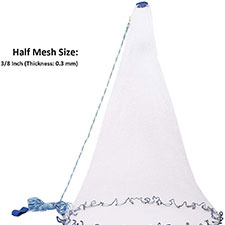
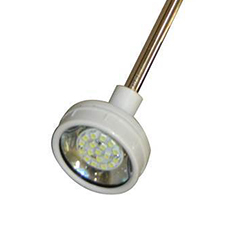
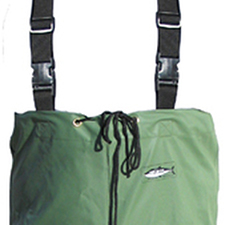
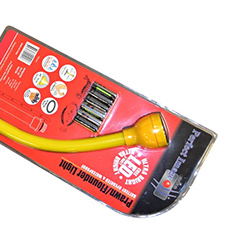
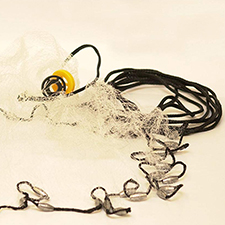
Recent Comments